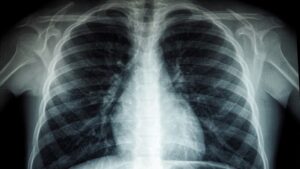[ad_1]
ChineseAs a new sign of the change of direction in the Covid-19 policy, it has been reported that it will end the epidemic control and prevention practices within the framework of the definition of “A category epidemic disease”.
The National Health Commission, in the instruction it sent to local health institutions and hospitals, asked them to complete their preparations for the transition to applications within the framework of the definition of “category B epidemic disease” as of January 8, 2023.
Despite the fact that Covid-19 was originally defined as “category B” from the beginning, Chinese health authorities were applying control and prevention measures according to the “category A” definition. This regime of control empowered local governments to decide and enforce strict measures such as lockdowns and quarantines.
Under Chinese law, “category A” epidemics such as plague and cholera require isolation of those infected and those in close contact with them and, if necessary, implementation of city-wide lockdown measures. In “B category” epidemic diseases such as AIDS, contagious hepatitis and bird flu, it is considered sufficient to “take treatment and preventive measures only when necessary”.
With the new application, the “new type”, which is the official designation of the disease due to Covid-19 in China, corona virus pneumonia” will be changed to “new type of corona virus infection”. It is estimated that the name change is taken into account that variants with weaker disease effects such as Omicron often do not cause pneumonia symptoms.
WILL PREPARE THE GROUND FOR THE OPENING OF THE BORDERS
It is envisaged that the definition change for implementation will be the last step that will pave the way for the opening of borders and the complete removal of quarantine measures.
A health official from Guangdong province in the south of the country told the South China Morning Post newspaper that the change in practice would facilitate efforts to reopen the border between the province and Hong Kong Special Administrative Region.
In China, those who come from abroad and from Hong Kong and Macau Special Administrative Regions are still required to have 3 days of medical surveillance at home in addition to 5 days of central quarantine.
CHANGE IN THE “ZERO CASE” POLICY
The Joint Epidemic Protection and Control Mechanism of the State Council announced the new approach in the implementation of Covid-19 measures on December 7, stating that large-scale closure, central quarantine, mass testing and travel restrictions should be abandoned.
The new approach was the strongest sign that China would change its strict epidemic control measures called “zero cases”.
Strict and large-scale measures such as quarantine, travel restrictions, mass testing, restriction of the activities of enterprises in the manufacturing, trade and services sector, as well as interfering with the ordinary course of life, were also controversial in terms of their economic costs.
While most countries adopted strategies to live in a certain harmony with the virus and avoid control measures that would disrupt the flow of life and economic activities, the restrictive measures applied since the beginning of the epidemic in China continued.
[ad_2]
Source link






